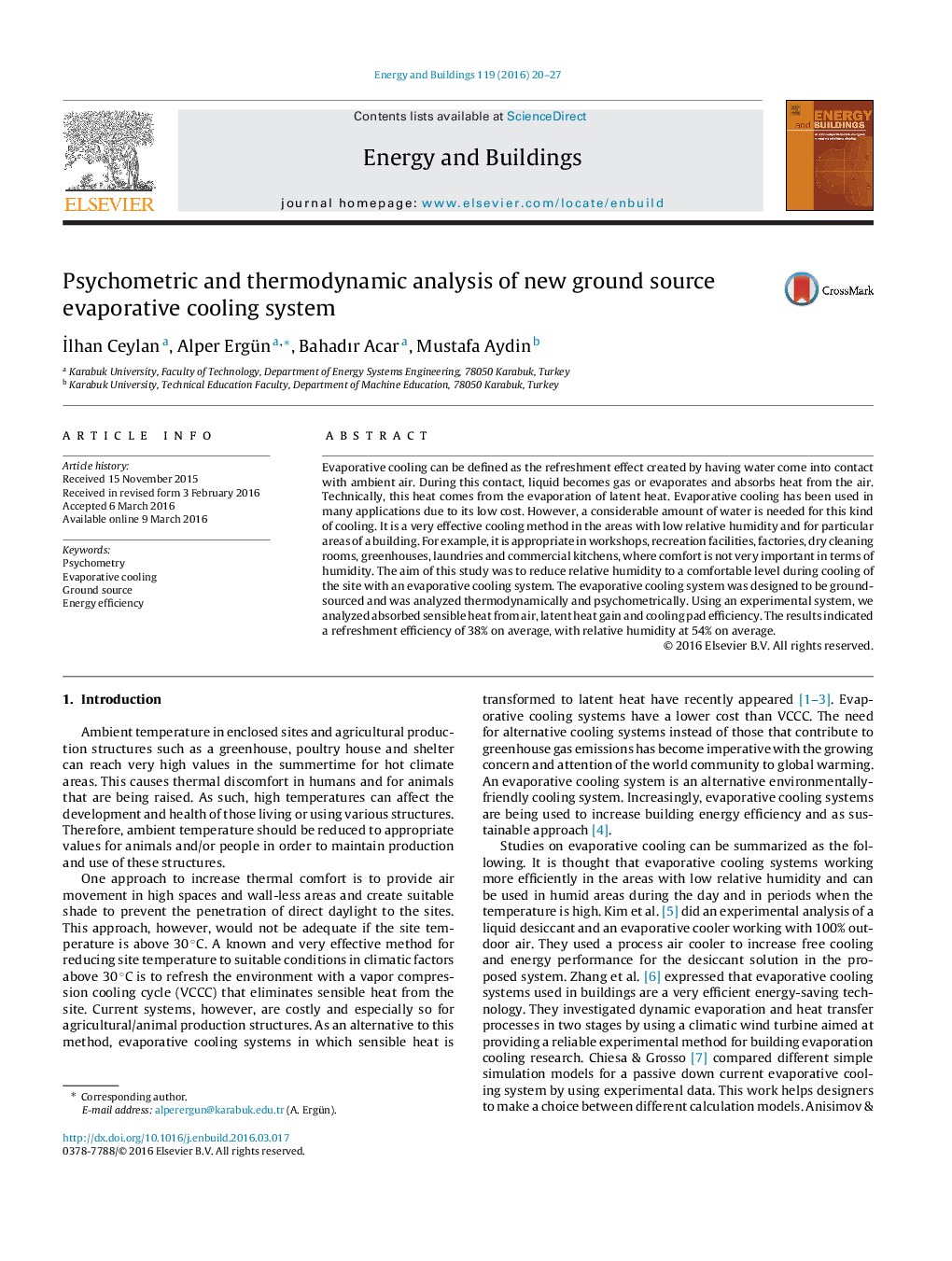| کد مقاله | کد نشریه | سال انتشار | مقاله انگلیسی | نسخه تمام متن |
|---|---|---|---|---|
| 262200 | 504016 | 2016 | 8 صفحه PDF | دانلود رایگان |
• Ground source evaporative cooler is used for the first time.
• Evaporative cooling is made, but the increasing relative humidity was prevented in the room by controlled inlet and outlet air.
• Designed and manufactured system is environment friendly since it does not include any liquid causing global warming.
Evaporative cooling can be defined as the refreshment effect created by having water come into contact with ambient air. During this contact, liquid becomes gas or evaporates and absorbs heat from the air. Technically, this heat comes from the evaporation of latent heat. Evaporative cooling has been used in many applications due to its low cost. However, a considerable amount of water is needed for this kind of cooling. It is a very effective cooling method in the areas with low relative humidity and for particular areas of a building. For example, it is appropriate in workshops, recreation facilities, factories, dry cleaning rooms, greenhouses, laundries and commercial kitchens, where comfort is not very important in terms of humidity. The aim of this study was to reduce relative humidity to a comfortable level during cooling of the site with an evaporative cooling system. The evaporative cooling system was designed to be ground-sourced and was analyzed thermodynamically and psychometrically. Using an experimental system, we analyzed absorbed sensible heat from air, latent heat gain and cooling pad efficiency. The results indicated a refreshment efficiency of 38% on average, with relative humidity at 54% on average.
Journal: Energy and Buildings - Volume 119, 1 May 2016, Pages 20–27
